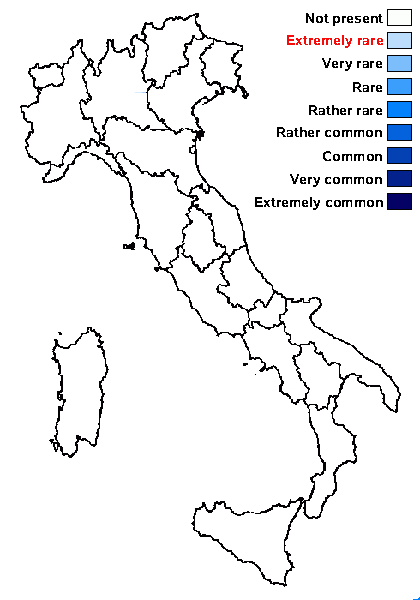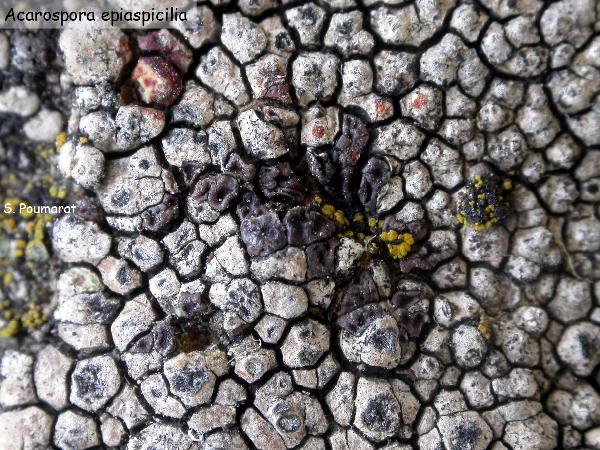Acarospora epiaspicilia Cl. Roux & M. Bertrand
in Roux & al., Bull. Soc. linn. Provence, 70, 1: 160, 2019.
Synonyms:
Distribution:
Description: Thallus crustose, episubstratic, areolate, 1.5-5 mm wide, developing on the thalli of Aspicilia calcitrapa and A. cupreogrisea. Areoles 0.2-1 mm wide, dispersed or clustered, medium to dark brown, epruinose, the marginal lower part pale. Epinecral layer 5-30 µm thick; cortex 23-40 µm thick, paraplectenchymatous, with a pigmented upper layer and a colourless lower layer; algal layer 27-55 µm thick, regular but interrupted by a few hyphal bundles. Apothecia 0.1-0.6 mm across, round to elliptical, immersed in the areoles, with a concave, brown disc and a more or less evident margin. Epithecium thin, brown, without crystals; hymenium colourless, 90-100 µm high, the hymenial gel euamyloid, IKI+ persistently dark blue; paraphyses sparingly branched, 1.5-2 µm thick at base, the apical cell up to 3.5 µm wide; subhymenium subparaplectenchymatous, up to 17-22 µm high, IKI+ blue; hypothecium up to 14 µm high, I-. Asci 60-100-spored, clavate, the apical dome K/I-, 65-70 x 16-18 µm. Ascospores 1-celled, hyaline, broadly ellipsoid to subglobose, 3-5 x 2.5-3 µm. Photobiont chlorococcoid. Spot tests: cortex and medulla K-, C-, KC-, P-. Chemistry: without lichen substances. Note: a recently-described species growing on the thalli of Aspicilia calcitrapa and A. cupreogrisea on siliceous rocks, known from the Southern French Alps, To be looked for in the Italian Alps.
Growth form: Crustose
Substrata: rocks
Photobiont: green algae other than Trentepohlia
Reproductive strategy: mainly sexual
paras Aspicilia calcitrapa and A. cupreogrisea

Predictive model
Growth form: Crustose
Substrata: rocks
Photobiont: green algae other than Trentepohlia
Reproductive strategy: mainly sexual
paras Aspicilia calcitrapa and A. cupreogrisea

Predictive model


